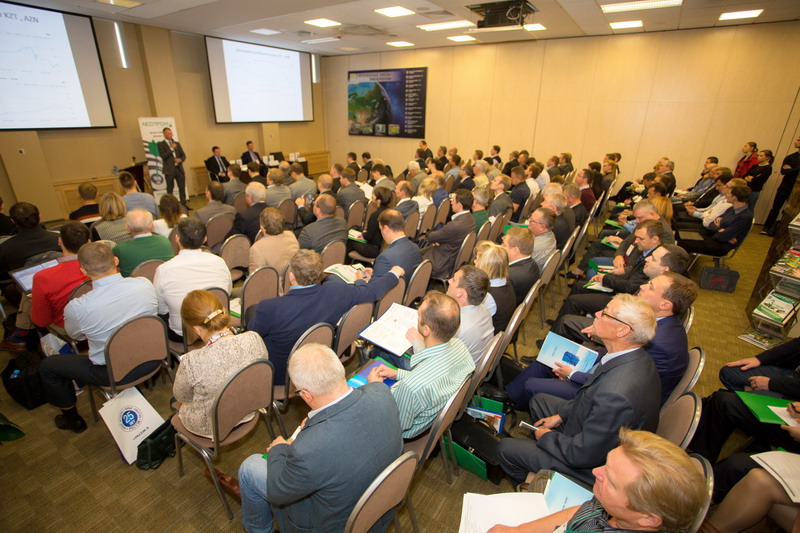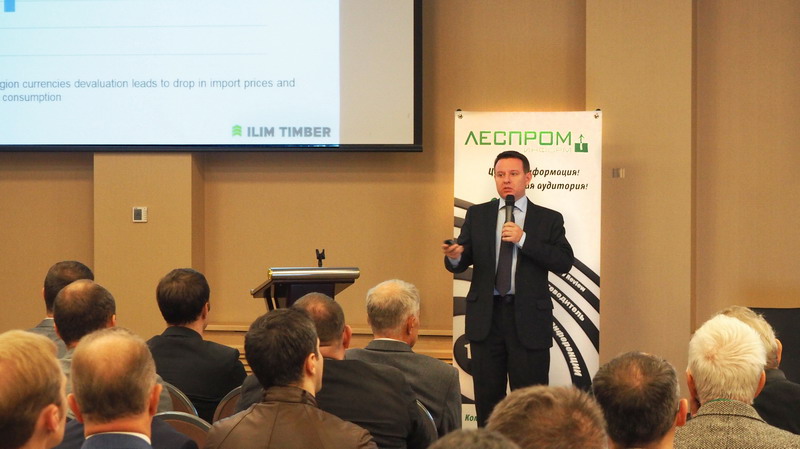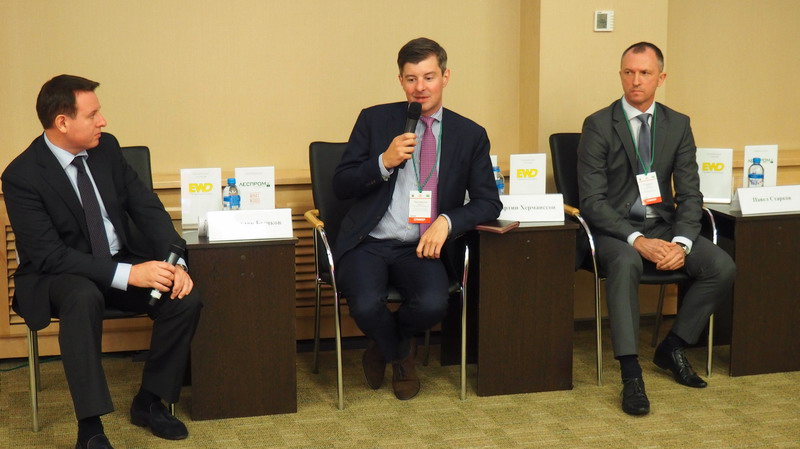25 ideas of the conference “Timber industry of Russia: searching of growth points”
We present a traditional compilation of major ideas of the conference “Timber industry of Russia: searching of growth points” held on 29 September in St. Petersburg. The event was co-organized by the LesPromInform business journal and WhatWood timber industry analytic agency with the support of Restec exhibition company.
Pavel Starkov, MM-Efimovsky, Sales Director:
After stable II-III quarters, the recent situation in China seems to be quite complex: the yuan fell, and the profitability is lower. Due to the decrease in exchange rates of national currencies it has also become less profitable to trade in Egypt, Kazakhstan and Uzbekistan.
China is gradually moving to more expensive and sophisticated products. This year, the Chinese market is slightly inert, inventory levels are high. There is a tough competition with the Scandinavians.
In Japan, the demand is stable and inventory levels are under control. North-West Russia is just opening this market: its mills started to work with Japan in the last 3-4 years.
South Korea is a small but capable market for sideboard products. In India, there is a growing demand at stable prices, there is a good prospect for Russia here. UAE witnesses the rise in real estate market, in public and infrastructure construction. The profitability of trade in Saudi Arabia is currently under question. In Egypt and Morocco, consumption is stable, but with low creditworthiness. In Finland, there is now oversupply, and lumber prices are falling.
In the Baltics, the consumption is stable. In this region there are many new investments, mergers and acquisitions. The segment of pine lumber is growing in Estonia and Latvia, many have increased their capacities and substitute the Scandinavian products.
In Russia, there are cases of bankruptcy and reduced consumption. The first quarter saw a surge in sales at last-year prices. Meanwhile, chain retailers note that consumption remained at the same level, in fact, so actually it’s because the number of stores increased, and extensive growth occurs.
There are several open issues on the market. First, the excess supply. Secondly, the increase in freight costs: ocean freight in St. Petersburg to China rose by 10-15% compared with the end of 2014, rail rates – by 10% and a further 5% rise is expected in 2016, road freight to Europe grew by 10-15% in Euro terms. Third, the increased requirements of clients: if earlier the standard was 32 or 50 mm, now there are a lot of specific requirements. Finally, the creditworthiness of the clients: 2-3 years ago, the sawmill industry was a producer’s market, now it is a consumer’s market.
What should be the tactics of trading in such a complex market? It is the constant control of costs, active work with the sales channels (balance of agent and direct sales, continuous monitoring of the creditworthiness, and the development of new regions/sales channels), and profitable allocation of sales between consumers.
Trade flows have reversed: manufacturers of building and finishing products in Russia started to think of exporting via the same channels which they previously used for importing deep processing products. Supplies started to Southeast Asia and MENA countries. Without established channels, it is difficult to sell: the distributors put you in queue, and to get forward the only way is special rates.
In Leningrad region, there is a great project of CLT factory, a well-planned one. Now everyone is waiting what will happen to it, such projects are the future.

Svyatoslav Bychkov, Ilim Timber, Director of External Communications:
The purchasing capacity of the MENA countries sank in national currencies.
The weakening of the yuan would give us more benefits than to Canadians.
The growth rate of furniture production in China now amounts to 4.5%, exports rose by 7% primarily due to the U.S. market. This is a good signal, as the quality wood products are in demand. However, it is almost impossible to compete with the Canadians and their SPF lumber in the construction segment. In the port of Tianjin, out of 1.3 million m3 of sawn timber, Canadian SPF accounts for 1 million m3, the rest are the products from all over the world. For Canada, the main market is the USA, so China receives lower-quality products.
Global sawmilling is driven by China and the United States as 50-million m3 markets. All trade flows and the market situation depend on what is happening in these two countries.
The Chinese government has compensated 50% of the freight to the residents of the port cluster, attracted interest-free loans for 40 companies and financed the construction of the port – that’s how the Chinese state support looks like.
Russian companies have started to make steps to the consumer and open representative offices in other countries, because the market has become tougher.
Information technologies have made the sales faster: the buyer is convenient to know where his goods are, in order to sell it to final consumers already on the way.

Martin Hermansson, Novoyeniseysky LHK, General Director:
Second grade of the Canadian SPF is worse than the fifth Russian grade, it is formwork for construction. Russian lumber in China is mainly for furniture products or lining.
New Zealand harvests 20 million m3 of roundwood and exports to China half of it, which is more than Russia.
Russian 1-4 grade is identical to the Scandinavian 1-5, and in fact it is much more stringent than the federal GOST standard, but buyers in China are confused and willing to pay more for clarity, they don’t want to understand our sorting rules. Perhaps we should edit the GOST or introduce more up-to-date rules for sorting, in order not to lose the market.
Five years ago, the Chinese market did not even exist for Sweden, but the establishment of the sawmill association and common shipping company have resolved this issue. In Russia, there are no such things as working sawmill association and organized promotion of timber in the world markets.
Previously, Chinese buyers were mostly state organizations. Now they are owners of furniture and other enterprises, end-users who want to communicate directly with the factory, and with such a complex market it is essential to eliminate middlemen.

Alexander Susloparov, Red October Sawmill, General Director:
If earlier the average roundwood diametre was 22 mm, now it is 19-20 mm, and in many regions even 18 mm became normal.
At many sites we are allowed to do only sanitary felling when the forest is already dead, it’s unwise. The root of all evil is in the technology of reforestation, as the rotation period of logging is more than 100 years. We should move on to selective cutting, harvest the trees which are ripe.
Often, oddly enough, instead of clear cutting de facto selective cutting is made. The companies stand on the principle “Less is better”.
Photo report by LespromInform journal
Resolution of the conference

 Timber industry research & analytics
Timber industry research & analytics 